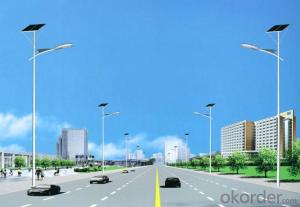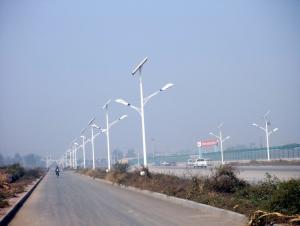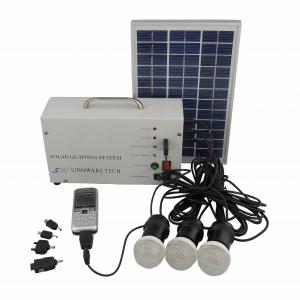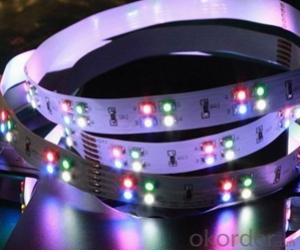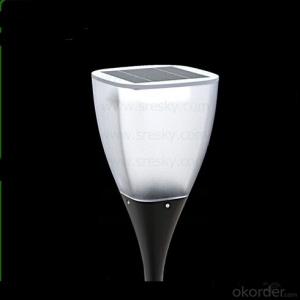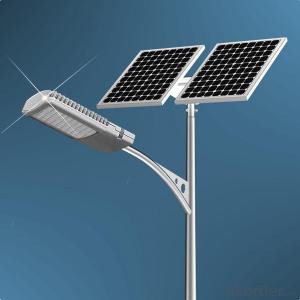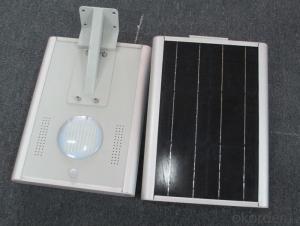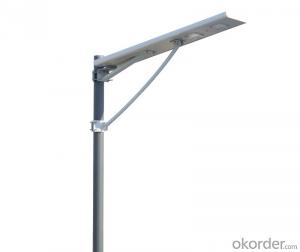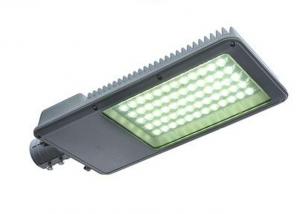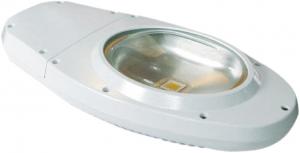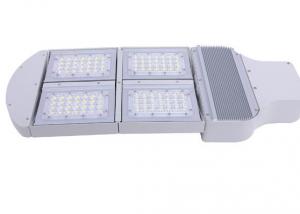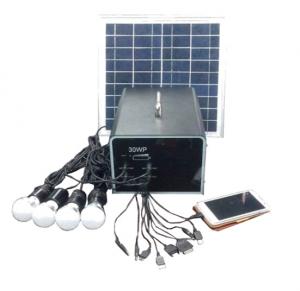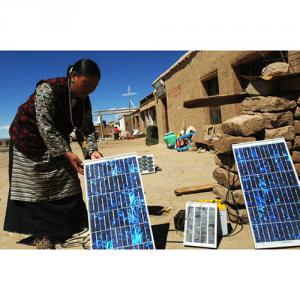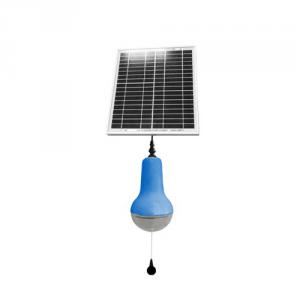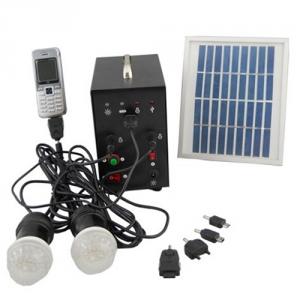Solar LED Street Lamp AN-SLC-60W
- Loading Port:
- Shanghai
- Payment Terms:
- TT OR LC
- Min Order Qty:
- 0 pc
- Supply Capability:
- 100000 pc/month
OKorder Service Pledge
OKorder Financial Service
You Might Also Like
Description of LED Street Lamp AN-SLC-60W
Based energy as the earth's resources increasingly poor, the investment cost of the surging, all kinds of safety and pollution hidden danger is everywhere, the solar energy as an "inexhaustible, an inexhaustible" safety, environmental protection, new energy more and more attention. At the same time, also with the development and progress of solar photovoltaic technology, solar lighting products in the double advantage of environmental protection and energy saving, solar street lamp, courtyard light, lawn lamp, etc, has gradually formed the scale of application of solar power development has gradually perfect in the field of street lighting.
Specifications of LED Street Lamp AN-SLC-60W
| Item Number | AN-SLC-40W | Input Voltage | AC85-265V, DC12/24V | |
| LED Power | 60W | LED Chip | 60pcs PHILIPS leds | |
| LED luminous efficiency | >90lm/W (based on whole lamp power) | Lamp Flux | 5400-5700lm (Tj=60℃, Ta=25℃) | |
| Power Factor | >0.95 | Lamp's Efficiency | >90% | |
| CRI (color rendering index) | >70 | THD | <15% | |
| Light Distribution Curve/Beam Pattern | Bat Wing / Rectangular Beam | Beam Lighting Angle | horizontal >120°, vertical >60° | |
| Color Temperature | 5000-6500K (CW); 3000-4000K (WW) | Guard Level | IP66 | |
| Working Temperature | -30℃ ~ +50℃ | Service Lifespan | 50,000hrs | |
| Housing Material | Aluminum Alloy | Product Dimension | 540*245*70mm | |
| Housing Material | 3.8 kgs | Gross Weight | 4.5 kgs | |
| Unit Price (USD/pc) | 10~99pcs | 47 | ||
| ≥100pcs | 38 | |||
.
Application places of LED Street Lamp AN-SLC-60W
Urban roads, sidewalks, square, schools, parks, gardens, residential areas, factory and other places where need outdoor lighting.
IMages of LED Street Lamp AN-SLC-60W
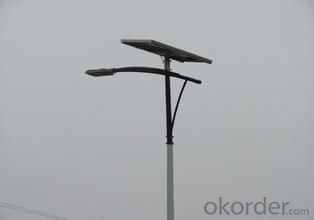
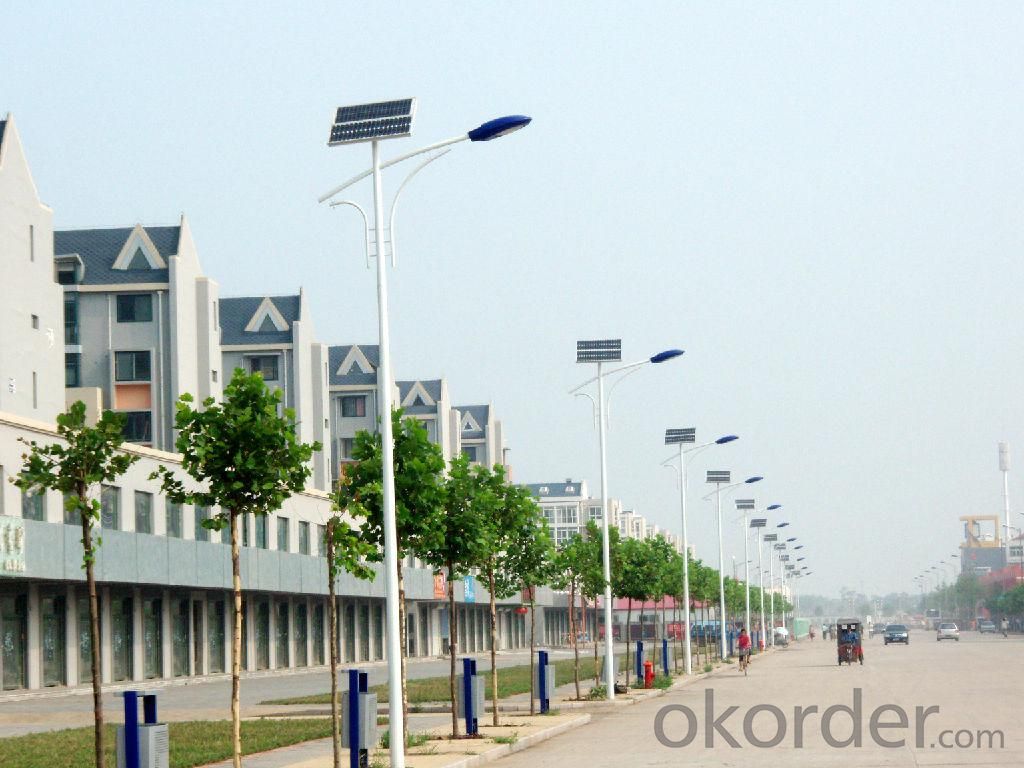
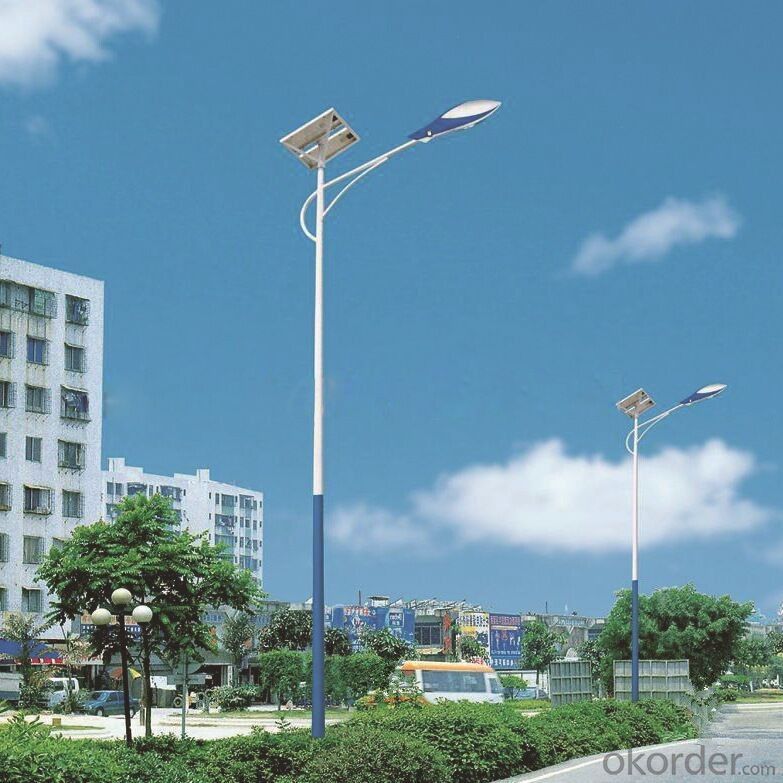
FAQ:
1. How long will my inquiry get response?
Your inquiry related to our products or prices will be replied within 24 hours.
2. Can I get professional service and suggestion?
Well-trained and experienced staffs to answer all your questions in fluent English.
3. Do you accept OEM or customized design?
OEM & ODM, any your customized lightings we can help you to design and put into product.
4. What if I need specific design?
Distributorship are offered for your unique design and some our current models.
- Q:Can solar lights be used for illuminating outdoor gazebos and pergolas?
- Yes, solar lights can be used for illuminating outdoor gazebos and pergolas. They are an energy-efficient and environmentally friendly option that can provide adequate lighting for these outdoor structures.
- Q:How do solar lights handle power fluctuations due to inverter failures?
- Solar lights typically do not rely on inverters as they are designed to directly convert solar energy into usable electricity. Therefore, power fluctuations caused by inverter failures generally do not affect solar lights.
- Q:Are solar lights resistant to extreme temperatures?
- Yes, solar lights are designed to be resistant to extreme temperatures. They are built with durable materials that can withstand both hot and cold climates, allowing them to function effectively in a wide range of temperature conditions.
- Q:Are solar lights suitable for rooftops?
- Yes, solar lights are suitable for rooftops. They are easy to install, require no wiring, and use renewable energy from the sun to provide illumination. They are also cost-effective and environmentally friendly, making them a popular choice for rooftop lighting solutions.
- Q:Can solar lights be used in urban areas with limited sunlight?
- Yes, solar lights can still be used in urban areas with limited sunlight. While the efficiency of solar lights may be slightly affected by reduced sunlight, advancements in solar technology have made them more efficient and capable of generating power even in low-light conditions. Additionally, urban areas often have enough ambient light to enable solar lights to function effectively.
- Q:How do solar lights turn on and off automatically?
- Solar lights turn on and off automatically due to the presence of a built-in light sensor, also known as a photoresistor. During the day, when there is sufficient ambient light, the sensor detects it and prevents the light from turning on. As the daylight fades and the surroundings become darker, the sensor detects the decrease in light and triggers the light to turn on. This automatic control system ensures that the solar light operates efficiently and conserves energy by only illuminating when necessary.
- Q:How much do solar lights cost?
- The cost of solar lights can vary depending on various factors such as the brand, quality, features, and the type of solar light you are looking for. On average, you can find a decent set of solar lights for your garden or pathway for around $20 to $50. These lights are usually equipped with LED bulbs and have basic features like automatic on/off sensors. If you are looking for more advanced solar lights with additional features such as motion sensors, adjustable brightness levels, or remote-controlled operation, the price can range from $50 to $100 or more. These lights are typically used for security purposes or to illuminate larger areas. For solar lights designed for specific purposes such as solar flood lights, solar spotlights, or solar string lights, the cost can vary even more depending on the size, brightness, and quality of the product. These lights can range from $20 to $200 or more. It is important to consider factors such as durability, battery life, and warranty when purchasing solar lights to ensure you get the best value for your money. Additionally, it is advisable to compare prices and read customer reviews to make an informed decision.
- Q:How do I dispose of solar lights properly?
- When it comes to disposing of solar lights properly, it is important to follow certain steps to ensure the safety of both the environment and yourself. Here are some guidelines to help you dispose of solar lights responsibly: 1. Reuse or repair: Before considering disposal, check if the solar lights can be repaired or if any components can be salvaged for future use. If the lights can still function with minor repairs, it is best to extend their lifespan by reusing them. 2. Battery removal: The most critical component to address when disposing of solar lights is the battery. Solar lights typically use rechargeable batteries, which can contain toxic chemicals. Start by removing the battery from the light following the manufacturer's instructions. If the battery is still functional, consider recycling it separately (more on that below). If it's dead or damaged, proceed to the next step. 3. Separate the components: After removing the battery, separate the different components of the solar light. This may include the solar panel, LED lights, wiring, and other parts. By separating these components, it becomes easier to dispose of them appropriately. 4. Recycling: Many components of solar lights can be recycled. Check with your local recycling center or municipal waste management authority to determine if they accept solar lights for recycling. In some cases, they may have specific drop-off points or guidelines for recycling electronic waste. If recycling options are not available locally, search for specialized recycling programs or mail-in services that accept solar lights for proper disposal. 5. Hazardous waste disposal: If your local recycling center or waste management authority does not accept solar lights, treat them as hazardous waste. Contact your local government or environmental protection agency to inquire about hazardous waste disposal options in your area. They will provide guidance on how to dispose of the lights safely, ensuring that any toxic components are handled appropriately. 6. Educate others: Spread awareness about proper solar light disposal methods to friends, family, and neighbors. Encourage them to follow the same guidelines and promote responsible waste management practices. Remember, the goal is to minimize the environmental impact of solar light disposal and prevent any potential harm caused by toxic components. By following these steps, you can ensure that your solar lights are disposed of in an environmentally friendly and responsible manner.
- Q:Can solar lights be used as a primary light source?
- Solar lights can be used as a primary light source in certain situations, such as in outdoor areas or remote locations where access to electricity is limited. However, their effectiveness and reliability may vary depending on factors like sunlight availability, battery capacity, and overall design. In urban or heavily populated areas with consistent electricity supply, solar lights may not be as practical for primary lighting needs.
- Q:How do I prevent damage to solar lights from animals or pests?
- To prevent damage to solar lights from animals or pests, there are a few strategies you can implement: 1. Choose the right location: Place your solar lights in areas where they are less likely to attract animals or pests. Avoid placing them near bird feeders, trash cans, or areas where animals tend to gather. 2. Use protective barriers: Install physical barriers around your solar lights to prevent animals from reaching them. This can be done using wire mesh, fences, or even cages. Make sure these barriers are sturdy enough to withstand any attempts by animals to access the lights. 3. Apply repellents: Use animal repellents or deterrents around your solar lights to discourage pests from coming near them. There are various products available, such as sprays or granules, that are designed to keep animals away without causing harm to them or the environment. 4. Employ motion sensors: Install solar lights with motion sensors that activate when animals or pests approach. This sudden burst of light and movement can startle them and make them less likely to damage the lights. 5. Regular maintenance: Inspect your solar lights regularly to ensure they are functioning properly and do not have any damage caused by animals. Clean them as needed to remove any dirt, debris, or animal droppings. 6. Consider additional deterrents: If you notice a specific animal or pest causing damage to your solar lights, you may need to employ specific deterrents for that particular species. For example, using ultrasonic devices or sprinklers that activate when animals are detected can be effective in deterring certain pests. Remember, it's essential to choose humane and environmentally-friendly methods when dealing with animals or pests to prevent damage to your solar lights.
1. Manufacturer Overview |
|
|---|---|
| Location | |
| Year Established | |
| Annual Output Value | |
| Main Markets | |
| Company Certifications | |
2. Manufacturer Certificates |
|
|---|---|
| a) Certification Name | |
| Range | |
| Reference | |
| Validity Period | |
3. Manufacturer Capability |
|
|---|---|
| a)Trade Capacity | |
| Nearest Port | |
| Export Percentage | |
| No.of Employees in Trade Department | |
| Language Spoken: | |
| b)Factory Information | |
| Factory Size: | |
| No. of Production Lines | |
| Contract Manufacturing | |
| Product Price Range | |
Send your message to us
Solar LED Street Lamp AN-SLC-60W
- Loading Port:
- Shanghai
- Payment Terms:
- TT OR LC
- Min Order Qty:
- 0 pc
- Supply Capability:
- 100000 pc/month
OKorder Service Pledge
OKorder Financial Service
Similar products
New products
Hot products
Related keywords
